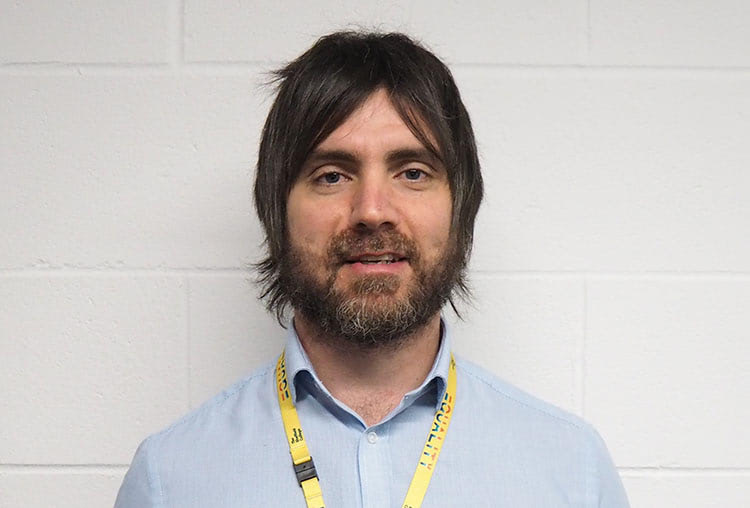Opportunities on the horizon for the quality of education

The terms remote, blended, online, distanced, synchronous, asynchronous have become common rhetoric over the past year in education.
Much discussion has followed on the impact and effectiveness of technology to support learning, and more pertinently, what opportunities are ahead. That is the premise of this article:
What opportunities are ahead for colleges to fully utilise the experiences of the last year to enhance the quality of education on offer?
In using the term quality of education I am directly referring to the latest Ofsted framework, the Education Inspection Framework (EIF).
Moreover, the EIF clearly sets out the quality of education as the intent of an institution’s curriculum, the implementation and delivery of the curriculum, and the impact the aforementioned has on student outcomes and progression.
This is nothing new to anyone in the further education (FE) sector but enables alignment with the scope of the article.
A good starting point to consider is that in most cases, colleges and other educational institutions over the past year have primarily used technology to deliver emergency remote teaching, which is not comparable with well planned online learning (Hodges et al, 2020).
The pandemic forced institutions to work very differently, very quickly, and although naturally over the course of the pandemic institutions worked to support staff through digital training, there has continued to be a reactive and somewhat emergency feel to how technology has been used, making the comparison of online learning throughout this period (emergency remote teaching) to face-to-face teaching requested by Zimmerman (2020) somewhat fruitless.
So how can principals, curriculum leaders and teachers develop the quality of education offered at their respective institutions?
Firstly, and dating back to the 2 Sigma Problem proposed by Benjamin Bloom (1984), which showed the importance of one-to-one tutoring when compared with conventional group teaching, the use of technology offers opportunities to solve the 2 Sigma problem (i.e. those receiving one-to-one tutoring are 98% more likely to achieve higher than those in the conventional group with 30 students in it).
This has to be planned for both in terms of the intent of the curriculum and the implementation. Bloom’s pioneering work is well cited by others in the field of online learning, for example Daphne Koller (2012), who also discusses how technology never tires of grading work and giving feedback, no matter how many attempts students make.
Although this comment was made with a little humour in mind it is very salient, as teachers can develop resources that replicate aspects of one-to-one tutoring and mastery learning that can be used by students until they are ready to progress.
Technology can also dictate the next phase of learning through the assessment of students, and although this appears quite advanced, it is actually something teachers can do via the use of most virtual learning environments (VLEs) and educational programmes and softwares.
Utilising technology to provide one-to-one tutoring and flipped learning
Furthermore, the simplicity in which one-to-one tutoring can be conducted in an online space must be taken advantage of. Anecdotally, in recent weeks this very aspect has been discussed with me from a range of teachers across varying curriculum areas, who have all stated that one of the aspects they will certainly continue with post-pandemic is utilising video conferencing software for one-to-one academic tutoring purposes.
Empowering leaders and teachers to utilise technology to provide one-to-one tutoring does not mean that 98% of students within an institution will immediately achieve higher grades, but it certainly does give greater opportunities to assess learning and give corrective feedback, and offer teachers time on a one-to-one basis with a student, something that has become more difficult in recent years. Through the use of Google Meet, Microsoft Teams, Zoom etc. teachers can easily meet with students for meaningful tutorials online, as opposed to requesting students to travel to a campus, saving valuable time.
In their recent book Ten Steps to Complex Learning Third Edition (2018), van Merriënboer & Kirschner discuss how the flipped learning approach is ‘well in line with the Ten Steps’ (p-316) they propose. This is very interesting and a development that goes some way to moving the discussion from education technology (EdTech) and evidence-based research, to one concerned with designing the most appropriate programme of learning. In simple terms the flipped classroom approach gives the theoretical content in advance so class time can be used for higher order learning and theoretical application (O’Flaherty & Phillips, 2015).
Opportunities for teachers and curriculum leaders to utilise the flipped approach when designing programmes of study should be considered.
Does it mean that all provision in an institution should look to utilise the flipped approach? – no, it needs careful consideration on how best to implement it and it may not work for all curricula, but in some it will, especially with the developed skills and confidence teachers have in their use of a range of education technologies.
For example, recording presentations, short videos or practical demonstrations and then sharing these with students has become common practice over the recent year, and with a little more thought this can be developed into an effective flipped learning approach. Furthermore, and although anecdotally, students have become more adept at accessing a range of learning materials online, which is integral to this approach.
Enhancing the quality of education is through the use of VR
A third opportunity for colleges and educational institutions to enhance their quality of education is through the use of virtual reality (VR). In simple terms, VR replicates the real world and offers students first-person experience in such environments through different levels of immersion (Zhao et al, 2020). VR can give students access to opportunities with high fidelity – the degree to which the simulated environment corresponds to the real world, which they would not have access to without VR.
Careful planning would be required to ensure that the implementation of VR supported and extended learning, for example, the degree of fidelity may differ for novice to experienced students, with the latter requiring VR environments that closely resemble real work environments (Gulikers, Bastiaens & Martens, 2005).
VR used in subjects such as anatomy and physiology would immediately spring to mind and evidence suggests a positive impact for these programmes (Zhao et al, 2020), but colleges and educational institutions should consider many of the opportunities to enhance provision through the use of VR. In recent months I have been fortunate to see how teachers are using VR in subjects such as construction and engineering, health and science and in animal care.
Furthermore, recently I have witnessed how staff from a work-related activity team have used innovative approaches to VR to ensure that students still get access to a range of employment opportunities, further highlighting positive innovations to enhance learning and offer valuable opportunities.
Greater flexibility in the accessibility of study programmes
One final point to make is the developed use of technology will offer greater flexibility in the accessibility of study programmes in the future if planned correctly. This could be greatly beneficial to adult education where commiting to times and a long commute to a campus can be problematic.
Colleges will have the opportunities to offer greater flexibility to support adults looking to retrain now and in the future, and although it won’t solve the recent disappointing government funding clawback proposal, it offers future opportunities.
How evidence-informed practice and EdTech can intersect to support learning
In a recent article I discussed how education technology can be utilised to implement the latest research into ‘what works’ in teaching and learning, and throughout this current article I have discussed the opportunities colleges have to enhance their quality of education through sensible use of technology.
Often, when using anything associated with technology in education there is a tendency to link this to outlandish and unproven innovations, but that certainly does not need to be the reality, nor should it:
- Can education technology give more opportunities to teachers to implement aspects of one-to-one tutoring in a simple and effective way? – yes, and this is available to all teachers across all provisions.
- Is there a greater opportunity for teachers and curriculum leaders to utilise education technology to implement the flipped learning approach? – yes.
- Finally, and the most advanced use of technology discussed here, can VR be used effectively to support students? – yes.
All of the above should be considered carefully by all institutions when designing the intent and implementation of their curricula, not because it is important to be innovative, but because all of the above will enhance the quality of education if used correctly and reviewed and developed by teachers and curriculum leaders.
Provision may look very different in the future
The period of emergency remote teaching (Hodges et al, 2020) throughout the pandemic has enabled many positives and highlighted many issues (for example, digital poverty). To compare emergency remote teaching to face-to-face delivery would be remiss and at no point should be debated.
What should be considered now by colleges and educational institutions is how they can develop their quality of education through the developed skills and experiences of the past year. It is quite possible that some provision may look very different in the future due to the advancements in the use of education technology, some provision may not – the key is that this has been carefully considered and thought-out.
Two things I hope for:
- one – an arbitrary figure is not plucked from the sky in terms of the amount of online delivery implemented at institutions;
- two, and most important – that the curriculum intent and implementation in 2021 onwards is not identical across the entire FE landscape to that of 2019.
This would certainly signify a missed opportunity to develop and enhance all aspects of the quality of education for the better.
Steven Spence is the lead for Teaching, Learning and Innovation at The Sheffield College. Having completed an M Ed in 2013 he is now in the final stages of his doctoral study.











Responses